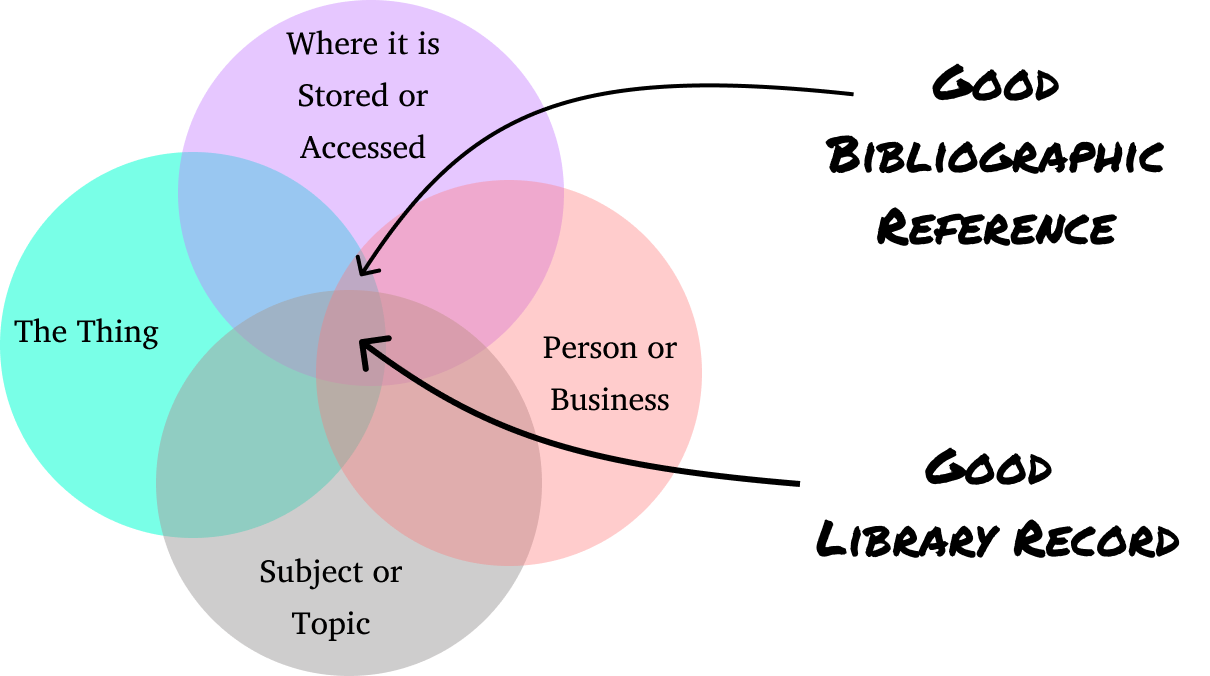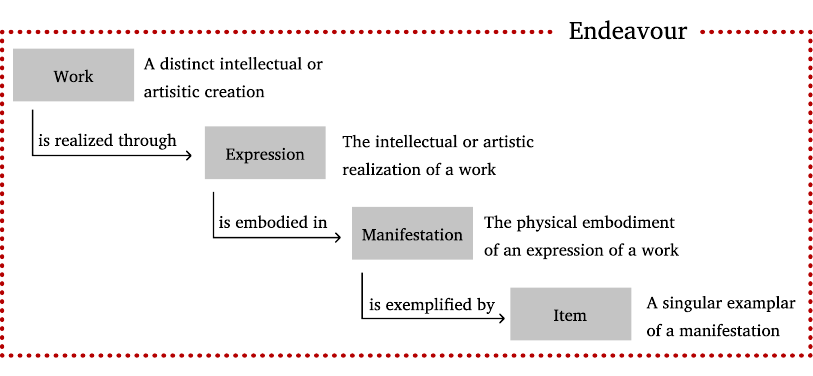A Conceptual Model for Records and Things
Conceptual models tell us how things fit together. Zotero has a conceptual model for how its components fit together at the software level, libraries have conceptual models on how they build library records and catalogues, archives have conceptual models for how they organize artifacts, and style sheets and publishing guides have conceptual models for how they would like items to be referenced.
Scholars increasingly are apt to reference with more specificity. This is a good thing, it helps fellow scholars to find the exact evidence which was consulted during an investigation. I propose that by understanding conceptual models that libraries use to relate various kinds of records and their associated artifacts, we can make more informed and clearer, reference patterns in our scholarly documents.
How does a Library Record Model help us?
The question has been put forth: “How does a library science model really help us with crafting good references?” and critics are correct to point out that they are different and mostly seek to do different things.
Library Records vs. Bibliographic Record
Credit: Hugh Paterson III

Basic Model and terminology
So what library model do I find most useful?
Functional Requirements for Bibliographic Records. It is a model that gained tracktion in the 1990’s and has evolved to become a component of the modern library cataloguing rules called Resource Description & Access.
Functional Requirements for Bibliographic Records model of class 1 entities
Credit: Hugh Paterson III

As a fairly straight forward model FRBR, has the power to force users of the model to ask questions like: “am I dealing with two expressions of the same work”, or “am I dealing with two manifestations of the same expression”, or even “am I dealing with two different works”?
As scholars and authors we constantly need to ask ourselves: Is the resource I am refernecing a one-of-a-kind resource or is it general resource for which there are many items (copies)? That is, am I referencing a specific copy or a generally available resource. We then also need to ask if we are attributing the right contributors to a work. FRBR can help us with both of these kinds of questions.
For example, if we consider the case of academic works which often include pre-prints, journal articles, and Conference presentations, FRBR would tell us how these items are related.
FRBR applied to the typical academic output
Credit: replicated from another source by Hugh Paterson III

How do ‘Manuals of Style’ requirements map to FRBR concepts?
The case of translators, dealing with pre-prints and post-prints. Dealing with specific items within an archive.